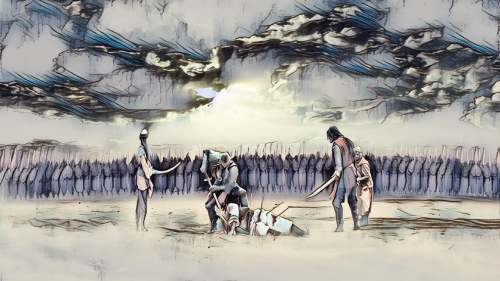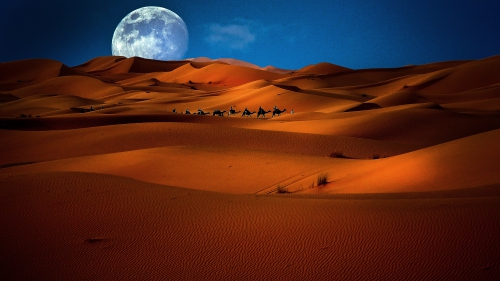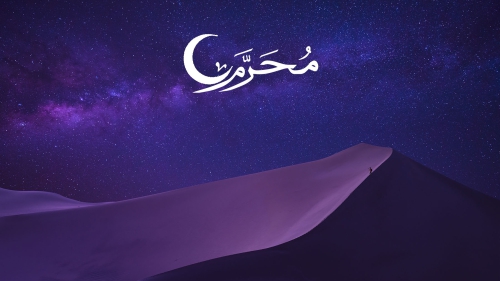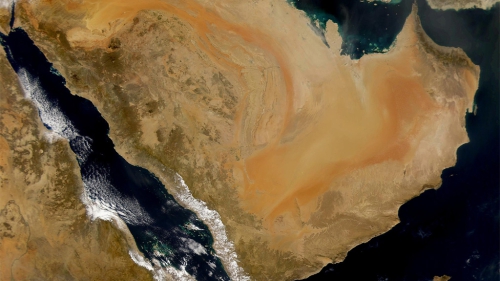Islam in Indonesia
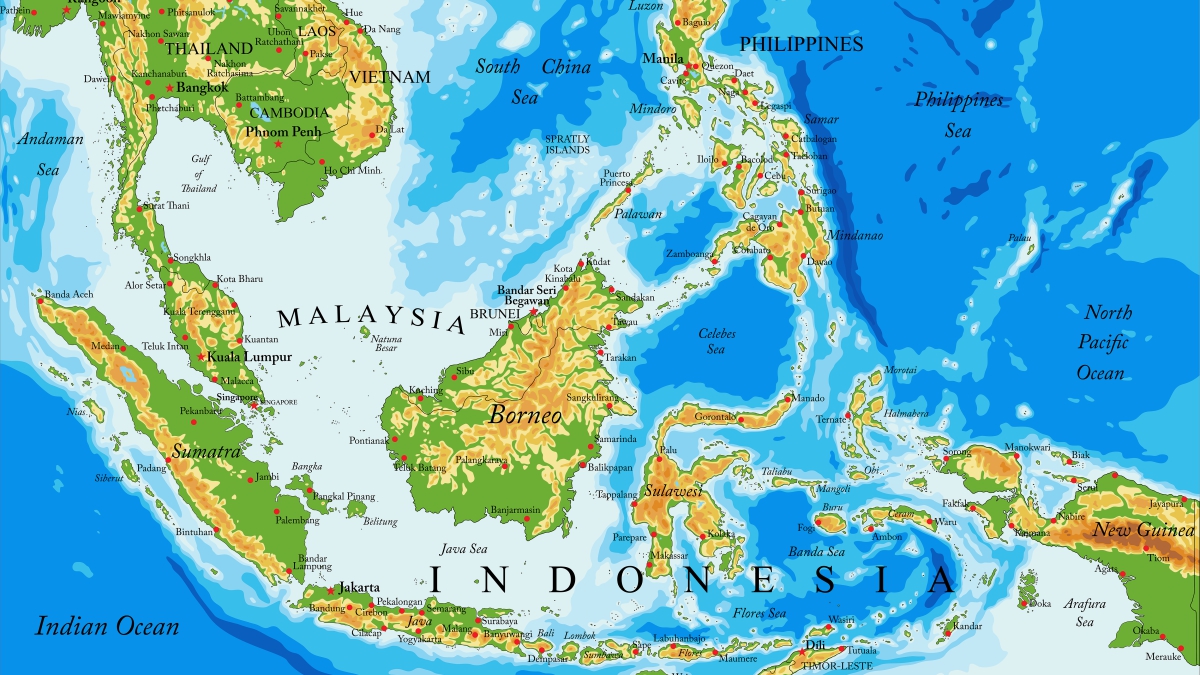
Modern Indonesia has the largest Muslim population in the world. Together with Malaysia and the Philippine islands, this area is home to over 250 million Muslims. Historically, the region has been referred to as the East Indies, but we will use the term “archipelago” to include the modern nations of Indonesia, Malaysia and Brunei and the term “Malay” as a comprehensive term to include the people, language and culture of these three nations.
Geography is a major determinant of history. The vast region extending from the Malayan peninsula to New Guinea is not a part of the interconnecting landmass extending from Morocco to Bengal. Geographic interconnections ensured political military interactions between North Africa, Egypt, West Asia, Central Asia and India. East Asia is separated from this interconnecting landmass by the Indian Ocean and the Bay of Bengal. Due to its remoteness, the political and military events in East Asia were affected only peripherally by the events in the rest of the Muslim world. As a consequence, Indonesia and Malaysia had to forge their own history, which is related to that of the rest of the Islamic world more in its spiritual, intellectual and religious content and only marginally in its military-political content.
Pre-Islamic Times
The pre-Islamic Archipelago had a Hindu ruling class over a Buddhist-Hindu-animist matrix. The first infusion of Indian elements into the Archipelago occurred during the reign of Ashoka (269-232 BCE). Ashoka was the first to consolidate his power over much of the Indian subcontinent. His early reign was characterized by a relentless war to expand his dominions. However, after the Battle of Kalinga (circa 250 BCE), he was so moved by the slaughter and destruction of the war, that he embraced Buddhism. His capital of Pataliputra (modern Patna) became a principal Buddhist center. Ashoka’s edicts of non-violence, reflecting the teachings of Buddha, were carved into stone and were sent to Sri Lanka, Burma, Afghanistan and the Indonesian Islands.
The imperial court of Ashoka maintained diplomatic relations with the Assyrian courts of Persia and Syria, the pharaohs of Egypt, Alexander I of Macedonia and the Tang Dynasty of China. India was also a major player in the trade linking China, India and the Mediterranean. It stands to reason that the emissaries of the emperor would have carried his message to these far-flung corners of the known world. However, Buddhism was slow to expand its influence in the Archipelago and in China, reflecting in part the difficult communications of the age and in part the passive, non-violent approach of Buddhism. It was not until the 3rd and 4th centuries that Buddhism spread rapidly in China, Japan and the Archipelago.
In the 4th century, northern India was consolidated under the Gupta Empire (320-467). Emperor Chandra Gupta II (375-415) extended his kingdom through conquest, marriage and diplomacy over much of the Indian subcontinent. We know a good deal about this period through the writings of the Chinese traveler Fa-Hsien. During this period, Hinduism went through a period of resurgence in India, displacing Buddhism as the dominant religion of India. The well-known poet Kalidasa lived at the court of Chandra Gupta. The patronage of the royal court encouraged Hindu ideas to travel far and wide.
However, it was southern India that was the primary vehicle for the transmission of Hinduism to the Archipelago. Geography as well as politics favored the south. The monsoons connected the sea-lanes of Sri Lanka and the Tamil lands to the Archipelago. Commerce stimulated cultural and religious interactions. Buddhism was the international faith in Asia but Hinduism found favor in the courts of Sumatra, Cambodia and Vietnam. No doubt the commercial advantages of maintaining a common religious bond played an important role. Southern India and Sri Lanka exported cotton, ivory, elephants, brass work and iron to the Archipelago and China. In turn, the Archipelago exported camphor and spices. China exported silk, oil and amber. The products of India and East Asia were exported from the western coast of India to the Roman Empire in the Mediterranean. Dialects of south Indian languages as well as Sanskrit were introduced into the Archipelago and into Indochina.
The south Indian influence grew with time. In the 6th and 7th centuries, the Pallava and Chola kingdoms controlled much of what is today Tamil Nadu, in southeastern India. Both of these kingdoms were predatory and lived off raiding their neighbors. The Cholas, in particular, built a powerful navy and raided as far as the Indonesian islands. In 1025, the Chola navy defeated the navy of the Empire of Sri Vijaya based in Sumatra and became the most powerful naval force in the Bay of Bengal during the first half of the 11th century. Together with the Keralites of Malabar and the Pallavas of the southern tip of India, the Chola-Pallava regions provided an important link in the trade between the Roman Empire, India and China. The south Indian kingdoms continued to prosper under successive dynasties until the arrival of Malik Kafur (circa 1300), general of Alauddin Khilji’s armies in the Deccan, in southern India. In the thousand years of pre-Islamic interactions with the Archipelago, the temples of Angorwat in Cambodia were built (circa 1000) and the Hindu kingdoms of Sri Vijaya in Sumatra and Majapahit in Java rose and fell, leaving a strong Sanskrit influence on the language, customs, art and architecture of the Archipelago and Indochina.
The introduction of Islam into the Archipelago may be divided into three phases: (1) the first phase extending from the Hijra (622) to 1100 (2) the second phase covering the period 1100 to 1500 and (3) the third phase extending from 1500 to modern times.
622 - 1100 CE
The first phase was a product of commercial contacts between the maritime regions of the Indian Ocean. Trade between West Asia and East Asia predates the Islamic period. Merchants from Yemen and the Persian Gulf followed the monsoons to the coast of Malabar and from there to the islands of Sri Lanka, Java and Sumatra. This trade mushroomed with the onset of Islam. The powerful Abbasids in Baghdad especially encouraged global trade. To the west, trade caravans traversed the Sahara through West Africa deep into what is today Ghana and Nigeria. To the east, the Silk Road to China was brisk with activity. Sea borne trade was not far behind. Muslim merchants, both Arab and Persian, plied the Indian Ocean and captured the bulk of the trade with India, East Africa, Indonesia and China. Colonies of merchants grew up in Gujrat, Malabar, Sri Lanka, Sumatra, Canton and all along the East African coast. Al Masudi records that in 877, during the reign of the Tang Emperor Hi-Tsung, there was a colony of almost 200,000 Muslims in Canton, China. A peasant rebellion in 887 forced these Muslims to flee and settle at Kheda on the west coast of Malaya. The merchant colonies along the rim of the Indian Ocean grew in size and prosperity between the years 750 and 1100.
Impressed by the honesty and integrity of these merchants, a large number of Malays accepted Islam. Intermarriage also played a part in conversions, as happened in Malabar and Sumatra. The immigrants did not force their own customs and culture on the local populations. Instead, they adopted the local culture while introducing the doctrine of Tawhid and the requirements of the Shariah. The Arabs were always a small minority among the Malays but they enjoyed a privileged position in society. They spoke the language of the Qur’an and had a reputation for piety and steadfastness. They were sought after as ideal spouses. Even the rajas and the sultans considered it an honor to have an Arab marry within the family and those with Arab blood were honored as Sayyids, descendants of the Prophet’s family.
This period marked the zenith of classical Islamic civilization. It was during the 8th and 9th centuries that the major schools of Fiqh evolved in Madina and Kufa. The Islam that was carried by the Arab and Persian merchants had a heavy content of Shariah and Fiqh. Early Islam in Indonesia and Malaysia reflected the intellectual currents in West Asia, although the region was outside the political military circle of the Abbasid Empire. The institution of the hajj played an important part in these developments. Most of the Arabs followed the Shafi’i and Maliki Schools that were the dominant schools in Madina and Damascus. Consequently, these were the schools of Fiqh brought back by the hajjis into Indonesia and Malaysia.
Circa 1100, the Islamic world went through a profound transformation. Al Gazzali (d. 1111), through the force and eloquence of his writings, dealt a severe blow to the study of philosophy and gave tasawwuf a respectable place in Islamic learning. Before 1100, Islamic civilization was extrovert and empirical, with a heavy emphasis on Shariah and Fiqh. After 1100, Islamic civilization turned inwards, focused more on the spirit than on philosophy and the physical sciences. Tasawwuf emerged as the dominant force in Islamic teachings. Major Sufi orders, which were to change the spiritual landscape of Asia and Africa, sprang up in Baghdad (Abdul Qader Jeelani, d. 1166), Delhi (Khwaja Moeenuddin Chishti, d. 1236), Konya, Turkey (Jalaluddin Rumi, d. 1273) and Cairo (al Shadhuli, d. 1258). The content as well as the thrust of Islamic civilization changed. The Archipelago, like India, felt the impact of this transformation.
1100 to 1500 CE
It was during the period 1100 to 1500 that Islam spread widely in Indonesia and Malaya. It was a spiritual Islam, focused more on the soul than on ritual, that found a home in the islands much as was the case in India. The spread of Islam in the Archipelago followed a geographical progression over a period of 400 years (1100 to 1500) starting with Sumatra, followed by Java, Malaya, Borneo, Sulu (Mindanao), Sulawesi and Luzon (Manila). Shaykh Abdullah Arif, a scholar from Arabia, introduced Islam into Sumatra around the year 1100. One of his disciples, Shaykh Burhan Shah, carried on dawah work throughout northern Sumatra. The first ruler of northern Sumatra to accept Islam was Johan Shah (1204), but it was during the reign of Sultan Malik al Saleh (d. 1297) that Islam received a major boost. Commercial contacts had introduced the faith to the coasts of Sumatra and Java as well as the western coast of Malaya and the eastern shores of Vietnam in the previous centuries. Sufi orders appeared and spread the faith throughout Sumatra during the 14th century. The city of Pasai became a center of learning. Ibn Batuta visited Pasai in 1345 and found its ruler, Sultan Malik al Zahir to be a pious man, a patron of scholars and an enthusiastic propagator of the faith. Malik al Zahir was a grandson of Malik al Saleh. In 1396, Parameswara, a prince from the Java, fled to Malacca. He married a daughter of the Sultan of Pasai, accepted Islam and changed his name to Sultan Iskander Shah (1406). It was this prince who introduced Islam into Malaya.
Pasai and Malacca became centers of tasawwuf, radiating their spiritual teachings to the interior areas. Malacca became the beacon of Islam for the region. The important commercial center of Kedah became Muslim by 1474. During this period-the 13th and 14th centuries-the Muslim world was reeling from Mongol and Tatar invasions. Many of the ulema, Sufi shaykhs and merchants fleeing this destruction found refuge in Delhi. As persecution of the Sufis increased at the court of Muhammed bin Tughlaq of Delhi (circa 1335), many of them migrated further east to the Archipelago. Tasawwuf had become so widespread in the Islamic world that many of the merchants and travelers themselves belonged to Sufi tareeqas. These migrations further stimulated religious scholarship in the islands and provided an impetus for the rise of great Sufi shaykhs among the Malays themselves. It was these shaykhs, sons of the soil, who spearheaded the propagation of the Islamic faith in their homeland.
In the 14th and 15th centuries, Java was the seat of the powerful Hindu kingdom of Majapahit, centered on the modern city of Jakarta. Agriculture and the spice trade were the mainstays of this kingdom. Majapahit dominated the island of Java and its commerce. Lesser rajas and local chiefs who controlled local ports paid tribute to the ruler of Majapahit. As commerce between the Archipelago and the Muslim world increased, many of these local rajas and chiefs found it more advantageous to forge closer ties with Muslim India and West Asia than with the Majapahit court. As political ties with the central political power weakened, a local power vacuum was created. Islam was the beneficiary of this political vacuum. One by one, the local rajas and chiefs accepted Islam. Conversion brought with it a sense of belonging to a larger international brotherhood as well as significant advantages in commerce and trade. In due time, the Majapahit court itself came under Islamic influence. By 1450, Islam was the dominant religion at the court.
In 1451, Shaykh Rahmat, a sage who had made his center near the modern city of Surabaya, converted the Majapahit ruler, Raja Kertawijaya, to Islam. By 1475, Majapahit had changed its character to a Muslim sultanate, although the kingdom itself survived until 1515. Thus, the spread of Islam in Java was different from what is a norm in history, wherein the conversion of a powerful ruler as a powerful incentive for the subjects to follow suit. In the islands, it was the people who converted first, with the king following suit. Among the Sufi shaykhs most revered by Javanese in this transformation were Shaykh Ishaq of Pasai, Sunan Bonang, Sunan Ampel, Sunan Giri, Sunan Dirijat and Khalifa Hussain.
Yet another element in the introduction of Islam was the issue of legitimacy of rule. Throughout history, there has been a strong current of opinion among Muslims that a ruler must be from the family of the Prophet. By the 14th century, when Islam had spread throughout Java and Sumatra, this belief in the legitimacy of rule by kinship with the Prophet was widely accepted by the Malay people. Consequently, the newly converted rulers sought marriage ties with the Sayyids and Sheriffs, who were Arab immigrants from Mecca and Madina. The progeny of these marriages could rightfully claim their lineage both from the ruling dynasties of the islands and the family of the Prophet. The kingdom of Majapahit was no exception to this longing for legitimacy. As more and more Javanese accepted Islam, the rulers of Majapahit had to bow to the will of the people, accept Islam and fulfill the requirements of legitimacy as accepted by the general population.
Shaykh Awliya Karim al Maqdum, who moved from Malacca to Mindanao in 1380, introduced Islam into the southern Philippines. His disciple Syed Abu Bakr carried on his work. In 1475, Sharif Muhammed Kabungsuan, moved from Malacca to Mindanao, where he worked tirelessly to introduce the faith. Further north, in the areas around the modern city of Manila, Sufi shaykhs carried on dawah (invitation to the faith) work. The Spanish forcibly converted these areas to Christianity when they conquered the Philippines (1564). The southern region of Sumatra was Islamized in the latter part of the 15th century. The islands of the Celebes and the western regions of New Guinea also embraced Islam around 1495 through the work of Shaykh Putah.
Islam spread like a beacon, carried from island to island, for almost four hundred years. Each time the inhabitants of an island accepted Islam, they themselves became the standard bearers of the new faith and worked hard to convert others. By the time the Portuguese and the Spanish arrived on the scene in the 16th century (1512 onwards), the entire Archipelago was either under the sway of Islam or on its way to becoming Muslim.
Islam is not just a dogma and a collection of rituals. It is a total worldview that embraces the intellect as well as the spirit. It is a paradigm shift that transforms individuals, societies and civilizations, reshaping their horizons and remolding them in a global framework. And so it was in the archipelago.
The introduction of tasawwuf into the Archipelago sparked intense intellectual activity among the Malays, much as it had done earlier in Central Asia, Persia, India, Egypt and North Africa. Debates and discussions on the spiritual aspects of tasawwuf produced some of the most sublime literature in the Malay language. Shaykh Hamza al Fansuri, who lived in Acheh (northern Sumatra) during the reign of Riyat Shah (1589-1604), is the best known of the Sufi poets of the era. The Malays were as intensely involved with discussions about Wahdat al Wajud (Unity of Existence) as was the rest of the Islamic world at that time. The greatest exponent of this school of tasawwuf in the Malay language was Nuruddin al Raniri (d. 1666) of the Qadariya order.
It was about this time that the Qur’an was translated into the Malay language by Shaykh Abdul Rauf al Sinkili (d. 1693) of the Shattaria order. It is also noteworthy that Acheh (northern Sumatra) produced a succession of four Muslim queens (1641-1699) starting with Sultana Tajul Alam Safiyyatuddin Shah (1641-1675). These women monarchs ruled with distinction over most of the islands of Sumatra and parts of Java and brought pride and honor to the womanhood of Islam.
During the second phase of Islamic penetration, immigration from India to the Archipelago increased. These migrations were helped by the growth of trade in the Indian Ocean and the pivoted role of Malabar, Gujrat and Bengal in this trade. Muslim Indians joined the ranks of the Arabs and Persians as merchants in East Asia. When Malik Kafur, a general of Emperor Alauddin Khilji of Delhi, captured southern India (1300-1320), Islam was introduced into the Deccan Plateau of India.
Thereafter, many of the migrants from India to Malaya and Indonesia were Tamilian Muslims. After 1335, thanks to the vagaries of Emperor Muhammed bin Tughlaq, India split up into regional powers. Among the more powerful were the kingdoms of Gujrat (1335-1565), Bengal (1340-1575) and the Deccan Sultanates (1336–1650). Merchants, Sufi shaykhs and ulema from Gujrat, Bengal, the Makran coast of Baluchistan and the Deccan made up the ranks of immigrants to the Archipelago. In the 19th and the 20th centuries, when Great Britain controlled both India and Malaya, more Indians traveled to Malaya as soldiers and policemen. Despite these migrations, the Indian Muslims remained a small minority in both Malaya and Indonesia although many Muslim Indo-Pakistanis intermarried with the Malays and became a part of the Islamic amalgam.
1500 CE to Modern Times
In the third phase - 1500 to 1950 - the consolidation of Islam that had started in the second phase continued. Major strides were made not just in the conversion of people, but also in the evolution of culture and literature. The influence of Islam on the Malay language was profound. In India and Pakistan, the cultural impact of the Turks had resulted in the birth of a new language, Urdu. In Indonesia and Malaysia, the religious impact of the Sufis and the ulema transformed the Malay language. New alphabets were introduced into the Malay language to facilitate the pronunciation of the Qur’an. Arabic and Farsi words enriched the language, expanding its reach to include philosophy, theology, polemics, exposition and the rational sciences, which facilitated the integration of the Malay peoples into the international brotherhood of Islam. The transcendence of Tawhid replaced the old worldview based on man-made deities. Language itself went through a transformation to accommodate the concepts of Being and the universal community of man. By the 16th century, the Malay language had become the common medium of expression of all the Malay peoples in Indonesia, Malaysia and the Philippines, displacing the ancient Javanese language. It also became the medium for the propagation of the new faith throughout the islands.
The third phase is also marked by the appearance of the Europeans. The Portuguese arrived first, capturing by force of arms the commercially important straits of Malacca in 1512. The fall of Malacca forced the migration of local scholars to the other islands, in turn facilitating the further spread of Islam. The experience of the Archipelago with regard to its initial contacts with the Europeans was the same as that of all the other littoral states in the Indian Ocean. Once the Portuguese had circumnavigated the coast of Africa and had established themselves in Goa (India), they embarked on a systematic campaign to destroy the important trading centers of East Africa, the Persian Gulf, western India and the Archipelago. However, it was soon obvious that Portugal had neither the manpower nor the resources to dominate the Indian Ocean. The powerful Ottoman Turks, who had by now assumed the Caliphate and were duty-bound to assist the Muslims around the globe, resisted the Portuguese aggression. Turkish naval forces engaged the Portuguese navy off the shores of East Africa and contained the advance of Portuguese power After 1550, a balance of power prevailed between Portugal and the land powers of Asia. The spirit of resistance to the European Christian invasions provided further impetus and drive to the spread of Islam in the Archipelago.
The next on the scene were the Spanish who were just as ruthless as the Portuguese and were far more powerful. After expelling the Jews and the Muslims from Spain (1492-1502) and destroying the ancient civilizations of the Aztecs, the Mayans and the Incas in the Americas (1500 to 1530), the Spanish made their appearance in East Asia. Magellan arrived in 1521, just about the time that the Sultan of Manila had accepted Islam and the new faith was establishing roots in the northern islands. In 1564, the Philippines fell to the Spanish who promptly introduced the Inquisition into the Archipelago and started a process of forced conversion. The resistance of the Muslims, however, successfully contained the Spanish advance to the northern islands.
The Portuguese and Spanish invasions halted the northward spread of Islam and arrested its advance into Vietnam and Indochina. A long and protracted military struggle ensued, between the invading Spanish and the defending Malay peoples, a struggle that goes on to this day in the island of Mindanao. By the 16th century, a military stalemate developed in which the island of Mindanao became the boundary between the Spanish possessions in the north and the Muslim Malay territories to the south.
In the 17th century, the Dutch displaced the Portuguese as the principal colonial power in the Far East. The Dutch were as ruthless as the Portuguese and the Spaniards, waged incessant war on the Malays, captured a large number of prisoners and took them off to far away as Cape Town, South Africa. Among of the captives were many learned Shaykhs and it was these Shaykhs who introduced Islam in Southern Africa. The British, after consolidating their position in India (1757-1806), proceeded to occupy the Straits of Malacca (1812). In the latter part of the 19th century, the states of the Archipelago fell one after the other to the Dutch and the British. In the ensuing struggle for independence, the Malay language provided a common bond for the peoples of Indonesia and Malaysia and Islam was a primary vehicle for an expression of their demand for freedom. The struggle itself provided an impetus to the consolidation of Islamic influence. The faith of Islam spread and by the turn of the 20th century, the entire Archipelago had become Muslim except for the island Bali and the isolated pocket of Singapore.
Another important aspect of the third phase is the migration of the Chinese to the archipelago. Of the two pre-Islamic civilizations in Asia, those of China and India, China had by far the most political military-technological influence on East Asia. But India had the greater religious-cultural influence. China radiated its power all across the ancient world. Chinese ambassadors were received with honor in Delhi, Samarqand, Yemen and Cairo. In 1406, the great Chinese Admiral Zheng Yi sailed the waters of the Indian Ocean with a mighty fleet as far as the Cape of Good Hope in South Africa, visiting along the way, the Sultanate of Java, Sri Lanka, Malabar, Yemen and Dar-as-Salaam in Zanzibar. The rajas and sultans of southeast Asia always saw fit to court the Chinese for trade and protection. The mass migration of Chinese to the archipelago was of more recent times. During the 19th century, many Chinese were brought over to work in the plantations of Malaya and Indonesia. Some came as merchants and stayed. By the end of the 19th century, the Chinese formed a third of the population of Malaya and a small but influential minority of the population of Indonesia. The area in and around the modern city of Singapore had a Chinese majority and that city continues to be dominated by the Chinese today. Most of the Chinese immigrants were not Muslim and it prevented them from melting into the Malayan society. Only in the interior regions of Malaysia and Indonesia were there some conversions when the Chinese occasionally married into Muslim families.
Acceptance of Islam in Indonesia vs. India
It is pertinent to ask why Islam found widespread acceptance in a Hindu-Buddhist matrix in Indonesia and Malaysia, whereas in India it found only partial acceptance. Several reasons may be advanced to explain these differences. First, the process of introduction of Islam was different in India and the Archipelago. During the first phase of Islamic expansion, between 622 and 1100, the commercial contacts between West Asia and the coastlines of India and Indonesia were similar. Islam made a peaceful penetration into southwestern India and the Archipelago. This changed with the invasions of Mahmud of Ghazna (circa 1000) into India. The dagger of Mahmud thrust deep into India and left a legacy of bitterness, which lasts to this day. Later invasions from Afghanistan and Central Asia, in search of loot from Hindustan, solidified this bitterness. In India, the ruling dynasties were primarily Turkish, Afghan and Moghul who looked outside the subcontinent for their roots. Except for a brief interlude in the reign of Alauddin Khilji (circa 1300), Indian Muslims and Hindus did not make inroads into the Delhi courts until later in the Moghul period (16th century). Not so in Indonesia. There, the Hindu and Buddhist rulers themselves accepted Islam and in turn became champions of the new faith. They were Malays, not Turks and Moghuls. The affinity of a people to their ruler acts as a powerful catalyst for the penetration of new ideas. Islam became a native religion in the islands from day one; it took Islam 300 years to do so in India. In the subcontinent, the faith spread through the great Sufi shaykhs in spite of the opposition of the rulers, and sometimes the opposition of official kadis. The rulers were more interested in collecting taxes than in introducing Islam while the kadis were busy giving fatwas.
The second important difference was language. In India, Farsi was the court language, as it was at the Safavid and Central Asian courts. Urdu and Hindi were native languages but did not find acceptance as court languages. In the Archipelago, Malay remained the official language undergoing a transformation through the influence of Arabic and Persian, but remaining essentially a language of the islands.
The third reason was the depth of penetration of Hindu and Buddhist cultures. In India, Hinduism had displaced Buddhism and had consolidated its hold through the work of Shankaracharya (7th century). The caste system was rigid and almost impenetrable. Not so in Indonesia and Indochina. There, Hinduism was a court veneer imposed from the top. Most of the population had remained animist. The caste system had not filtered down to the common folk. The religious milieu in these regions was closer to that in West Africa than India. It was easier for a universal faith like Islam to change the worldview of a people who were innately spiritual and open (as in the Archipelago) than a people who were spiritual but were insulated in the rigid compartments of a hierarchical caste structure (as in India).
Finally, the partial conversion of the subcontinent added another element of tension in a diverse land already divided by region, language, culture and caste. These tensions burst forth as political-military rivalries in the 18th century just as soon as the central Muslim power in Delhi waned and then disappeared. The Europeans fully exploited these tensions to their advantage. In the Archipelago, the acceptance of Islam was almost complete. The Malay peoples of Indonesia and Malaysia found in the new faith a source of national cohesiveness and universal solidarity.
( Source: History of Islam )
Professor Dr. Nazeer Ahmed is a scholar, scientist, inventor, historian and legislator. He is the founder patron of An Encyclopedia of Islamic History. It was his vision to compile a history of Islam from a global perspective, transcending the traditional emphasis on the Middle East. He wrote a two volume treatise, “Islam in Global History…From the Death of the Prophet Muhammed (pbuh) to the First World War”.
Topics: Dawah (Outreach), History, Indonesia, Travel
Views: 8510
Related Suggestions









